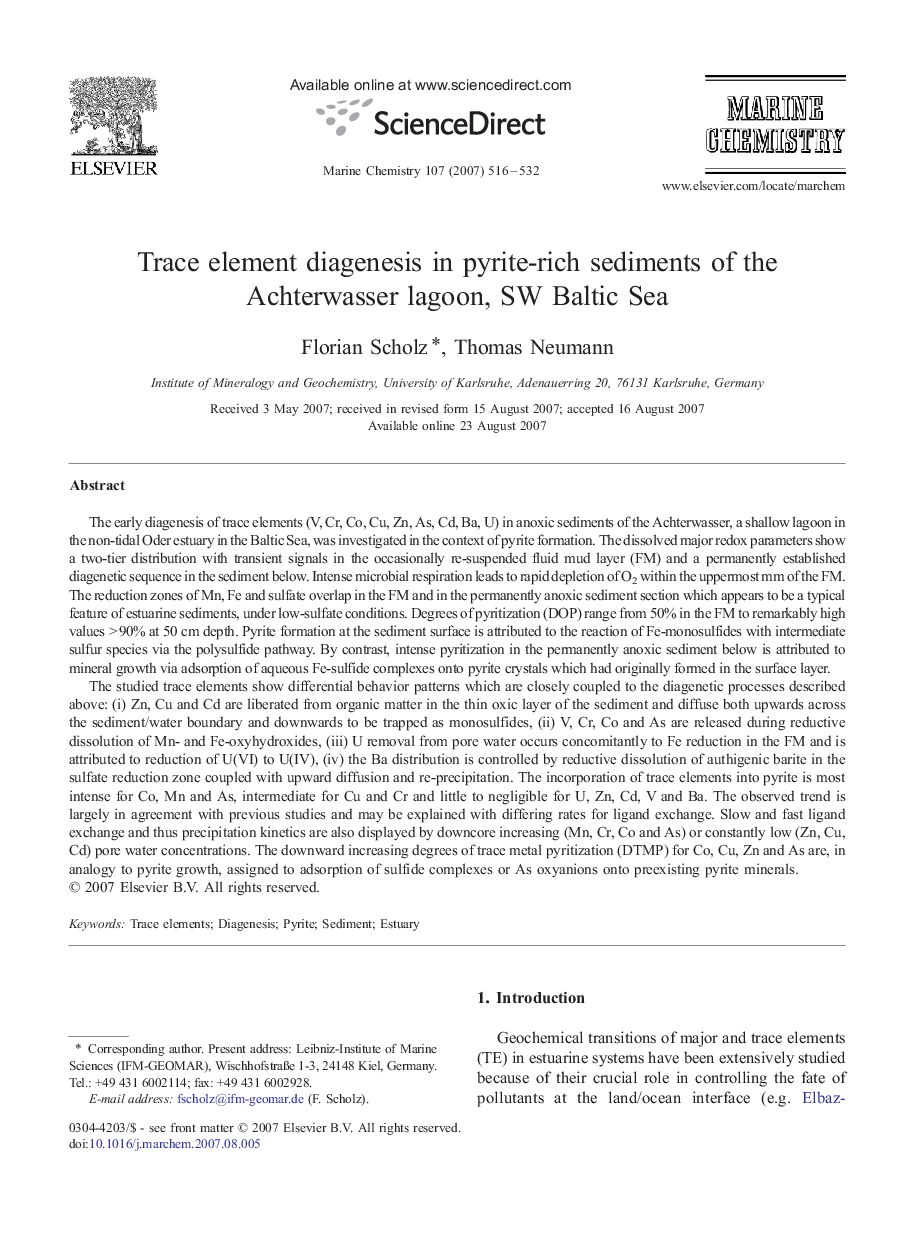| کد مقاله | کد نشریه | سال انتشار | مقاله انگلیسی | نسخه تمام متن |
|---|---|---|---|---|
| 1263254 | 971982 | 2007 | 17 صفحه PDF | دانلود رایگان |

The early diagenesis of trace elements (V, Cr, Co, Cu, Zn, As, Cd, Ba, U) in anoxic sediments of the Achterwasser, a shallow lagoon in the non-tidal Oder estuary in the Baltic Sea, was investigated in the context of pyrite formation. The dissolved major redox parameters show a two-tier distribution with transient signals in the occasionally re-suspended fluid mud layer (FM) and a permanently established diagenetic sequence in the sediment below. Intense microbial respiration leads to rapid depletion of O2 within the uppermost mm of the FM. The reduction zones of Mn, Fe and sulfate overlap in the FM and in the permanently anoxic sediment section which appears to be a typical feature of estuarine sediments, under low-sulfate conditions. Degrees of pyritization (DOP) range from 50% in the FM to remarkably high values > 90% at 50 cm depth. Pyrite formation at the sediment surface is attributed to the reaction of Fe-monosulfides with intermediate sulfur species via the polysulfide pathway. By contrast, intense pyritization in the permanently anoxic sediment below is attributed to mineral growth via adsorption of aqueous Fe-sulfide complexes onto pyrite crystals which had originally formed in the surface layer.The studied trace elements show differential behavior patterns which are closely coupled to the diagenetic processes described above: (i) Zn, Cu and Cd are liberated from organic matter in the thin oxic layer of the sediment and diffuse both upwards across the sediment/water boundary and downwards to be trapped as monosulfides, (ii) V, Cr, Co and As are released during reductive dissolution of Mn- and Fe-oxyhydroxides, (iii) U removal from pore water occurs concomitantly to Fe reduction in the FM and is attributed to reduction of U(VI) to U(IV), (iv) the Ba distribution is controlled by reductive dissolution of authigenic barite in the sulfate reduction zone coupled with upward diffusion and re-precipitation. The incorporation of trace elements into pyrite is most intense for Co, Mn and As, intermediate for Cu and Cr and little to negligible for U, Zn, Cd, V and Ba. The observed trend is largely in agreement with previous studies and may be explained with differing rates for ligand exchange. Slow and fast ligand exchange and thus precipitation kinetics are also displayed by downcore increasing (Mn, Cr, Co and As) or constantly low (Zn, Cu, Cd) pore water concentrations. The downward increasing degrees of trace metal pyritization (DTMP) for Co, Cu, Zn and As are, in analogy to pyrite growth, assigned to adsorption of sulfide complexes or As oxyanions onto preexisting pyrite minerals.
Journal: Marine Chemistry - Volume 107, Issue 4, 20 December 2007, Pages 516–532